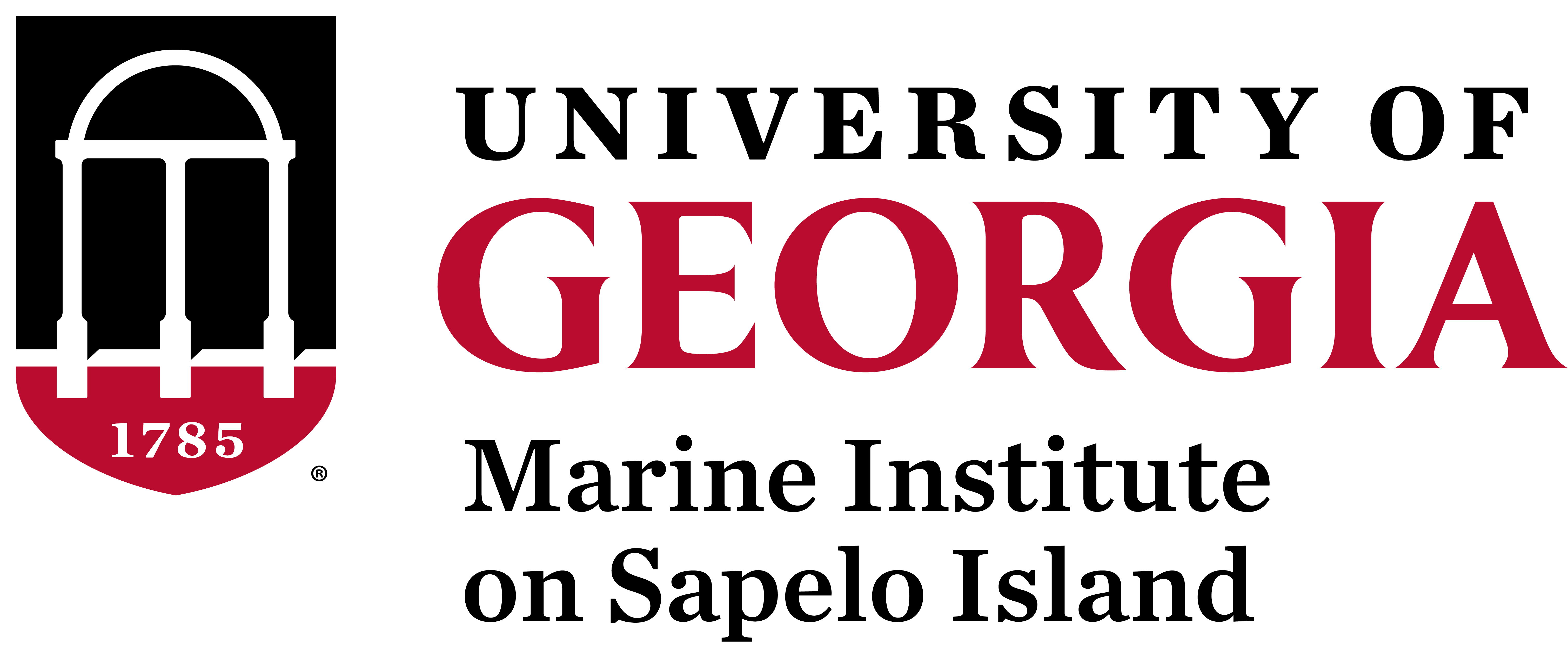Summer 2021 Intern Recap
UGAMI saw several interns over the summer working on various GCE LTER projects. A few of the interns visited Sapelo for a week or two while others lived on the island for the entire summer. Here is what five of the interns had to say about their projects and Sapelo experience!
Sydney Speir

“My name is Sydney Speir and I am from Brookline, New Hampshire. I am a rising 3rd year at the University of Georgia studying Ecology and Sustainability. This summer I had the wonderful opportunity to work alongside Dr. Amanda Spivak and Gabriella Giordano studying biogeochemistry at the GCE-LTER site on Sapelo Island, GA. We sampled multiple ongoing projects including DisturbanceScape, Predex, and DRAGNet, all of which aim to describe the way in which various saltmarsh disturbances impact saltmarsh functioning. Most of my work focused on studying decomposition rates, chemical characteristics of porewater, and organic matter within the soil. Since saltmarshes account for a huge portion of terrestrial carbon, it is crucial to understand how they react to disturbances, both natural and anthropogenic. The more we can describe these processes of disturbance and recovery, the better we can preserve these highly valuable ecosystems for future generations.
After I complete my B.S. in Ecology and Certificate in Sustainability, I plan to pursue a PhD in Integrative Conservation. I then hope to work for a non-profit or governmental agency, using my ecological background to manage conservation efforts on local levels. The GCE internship gave me invaluable experiences, knowledge, and connections, but most importantly, an appreciation for the beauty and complexity of saltmarshes that I will carry with me forever.”
Matt Pierce
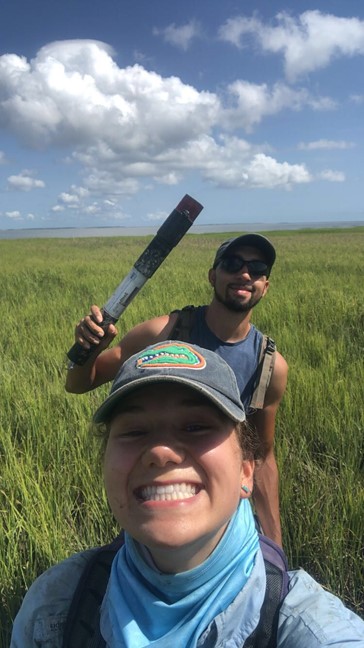
“I am originally from a small town in southern New Jersey named Millville. I just graduated from Rowan University with a BS in Biological Sciences and a BA in Environmental Science. I worked as an intern with the field technicians in the Georgia Coastal Ecosystems LTER office. While interning I worked with Dontrece, Elise, and John who work as the field technicians for UGAMI and the LTER.
While working at UGAMI, I was able to help the field technicians collect data and prepare research experiments for researchers working on the island from multiple areas on and around the Sapelo Island. I helped clean MicroCAT sondes along the Altamaha and Sapelo rivers with John and Dontrece. During the water quality cruise up the Altamaha River Elise and I collected water samples to measure pH and other chemical compounds within the water column. During the cruise we used multiple instruments to sample water quality metrics along the river. The MicroCAT and water quality data goes into a large dataset used by the LTER to generate accurate models of the water systems flowing into the Atlantic along the river systems. This work is important as it helps us understand what factors along the systems may be altering water quality and the biotic factors within these systems such as chlorophyll densities. While interning I was able to work with a graduate student from the University of Florida who is working on a wrack disturbance project, I helped collect phytoplankton data for a predator exclusion experiment, take drone imagery of marsh land that is used to assess vegetation types, and GPS points using an RTK.
In the fall, I will start a PhD program in Ecology at the Odum School of Ecology at the University of Georgia. Going forward I hope to use the skills and techniques that I acquired during my internship in my research as I work through my program.”
Marcela Ifju
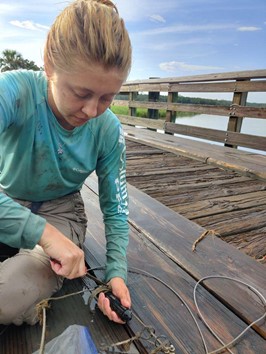
“My name is Marcela Ifju and I am a senior majoring in Mechanical engineering at the University of South Florida, but I am originally from Gainesville, Florida. In the future, I plan on continuing my education by getting my Ph.D. in Coastal Engineering while focusing on different aspects of physical oceanography.
This summer I had the opportunity to work with Dr. Christine Angelini and Sydney Williams as an REU intern on Sapelo Island, Georgia. Our research focused on Oysters and Mussels, and how varying levels of dissolved oxygen among different sites impact their growth and predation, along with how hypoxic conditions affect their filtration rates. This research is significant because Oysters and Mussels are very important species in the coastal and estuarine ecosystems. Some of the many benefits they provide are water filtration and shoreline structure and stabilization. The water quality, such as hypoxia, can affect certain aspects of these species such as behavioral, physiological, etc. and in the future could help or hurt certain ecosystems. So, it is important to find out just how much low dissolved oxygen levels impact these species.”
Nellie Little
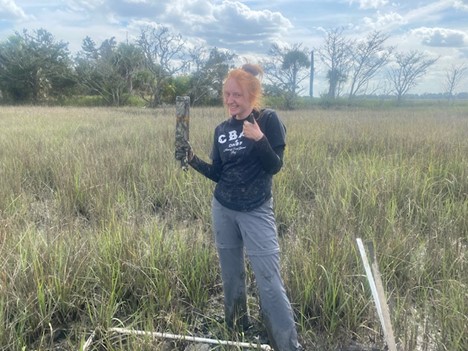
“My name is Nellie Little, I am a senior at the College of Coastal Georgia and I am originally from Scotland. I am a double major in General Biology and Environmental Science, with a minor in Geology. I was fortunate enough to be the intern for the Georgia Coastal Ecosystem LTER technicians for Summer 2021.
This internship did not have a specific focus of research which meant I was able to experience many different projects and get a well-rounded experience. I was able to work in the tidal freshwater ecosystem looking at canopy tree coverage as well as working on water quality in Sapelo and Doboy sounds. This variation allowed me to learn many different field skills which opened my possibilities for future research of my own, I hope to go to grad school and look at Marine geobiology.”
Zahrria Johnson
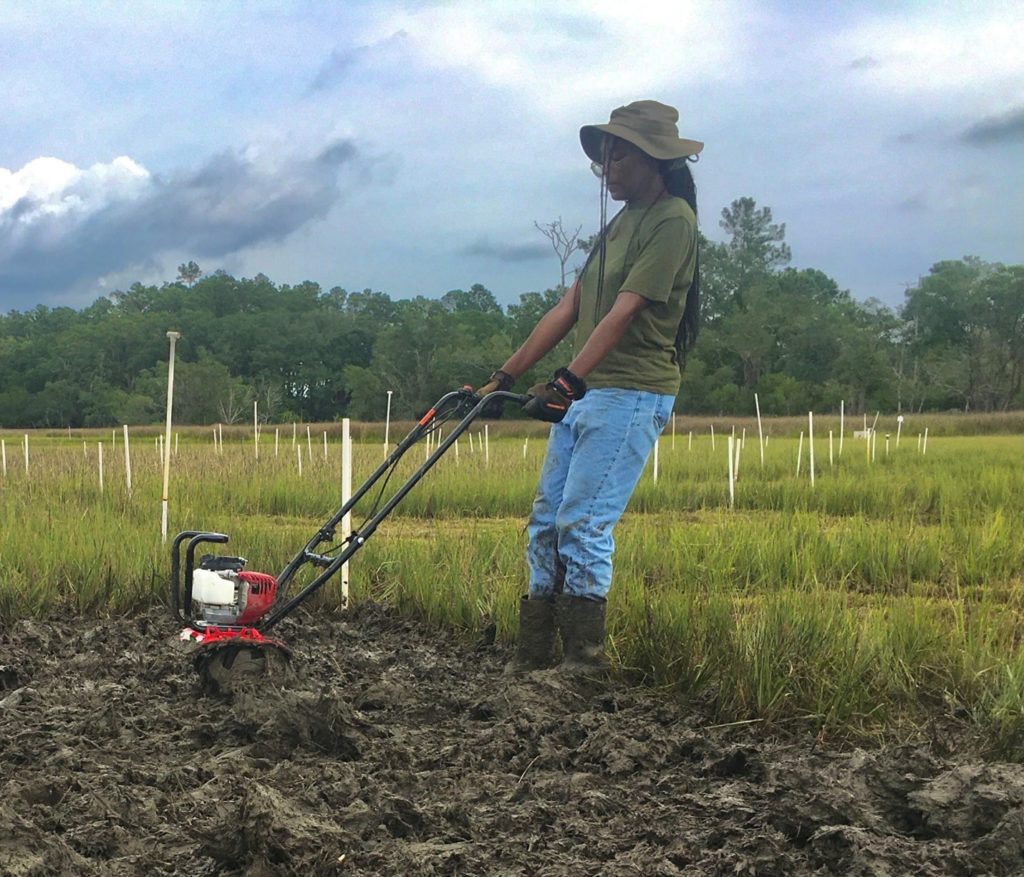
“Hi, I’m Zahrria. I am from Fort Worth, Texas, and I am a fourth-year Biology major at the University of Houston. This summer I worked with Dr. Steven Pennings to set up the Disturbance and Resources Across Global Grasslands (DRAGNet) experiment at Sapelo. DRAGNet is a long-term, standardized disturbance experiment that is being set up in grasslands around the world in an effort to understand how grass-dominated ecosystems respond to and recover from different disturbances. My 8 weeks at Sapelo involved marking plots in the marsh, sampling plants and invertebrates, determining soil characteristics, and implementing disturbances and nutrient treatments to the plots. This work is widely relevant because physical disturbances are amongst the most widespread of impacts affecting grasslands, and now more than ever these disturbances are occurring simultaneously with other impacts including climate change and nutrient deposition. With this project, we hope to learn how much of an impact these factors have on the marsh and other grasslands. As of now, after I graduate, I plan on taking time off to travel before looking for work as a laboratory technician and later applying to graduate programs in wildlife sciences.”
